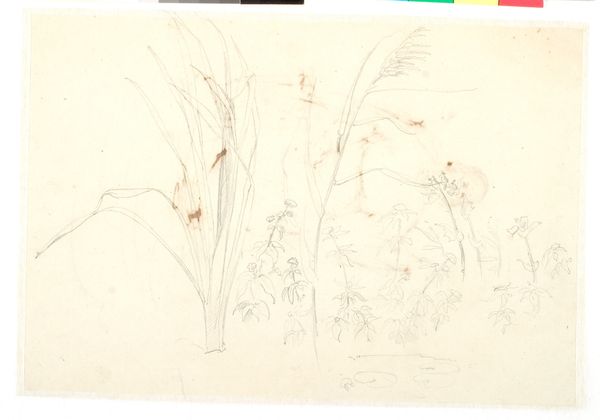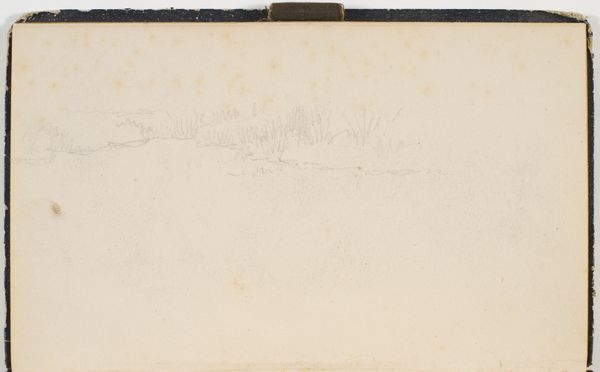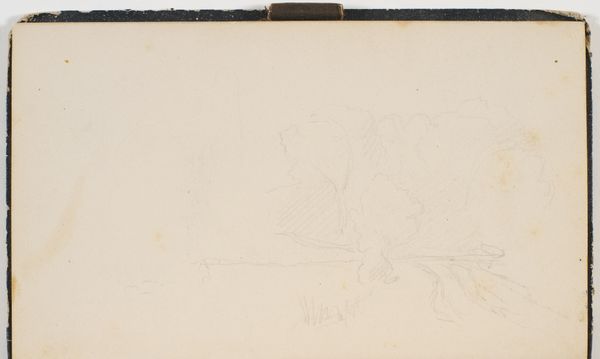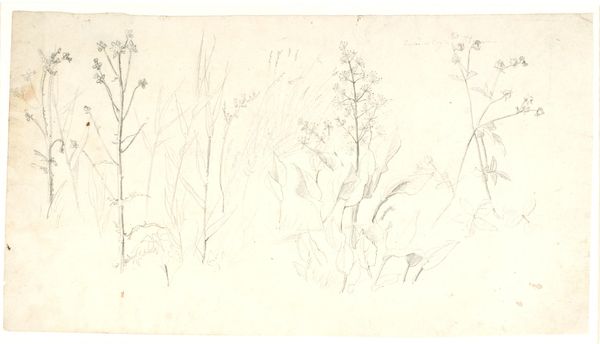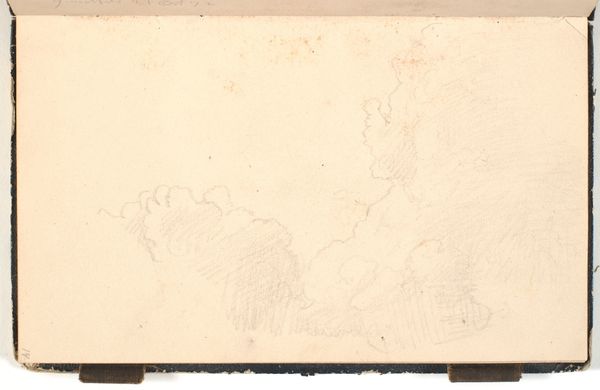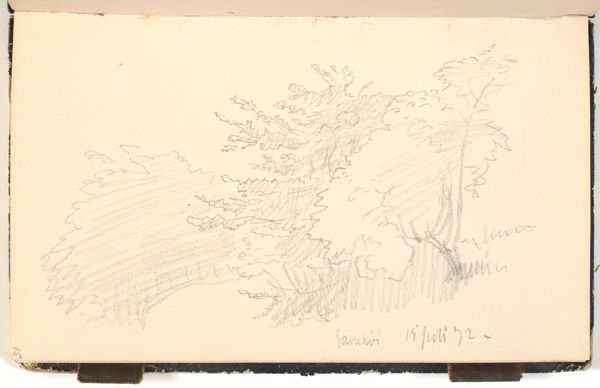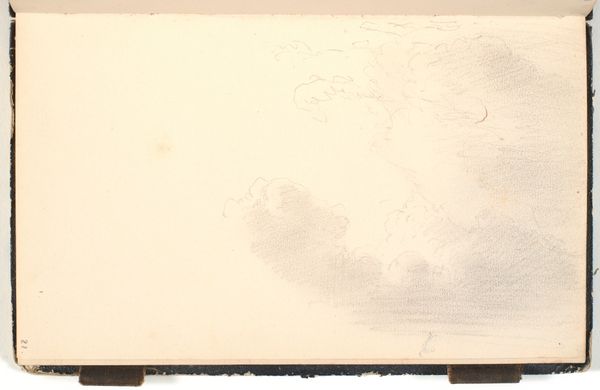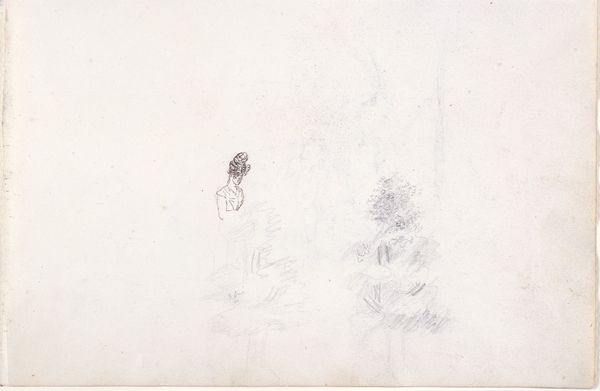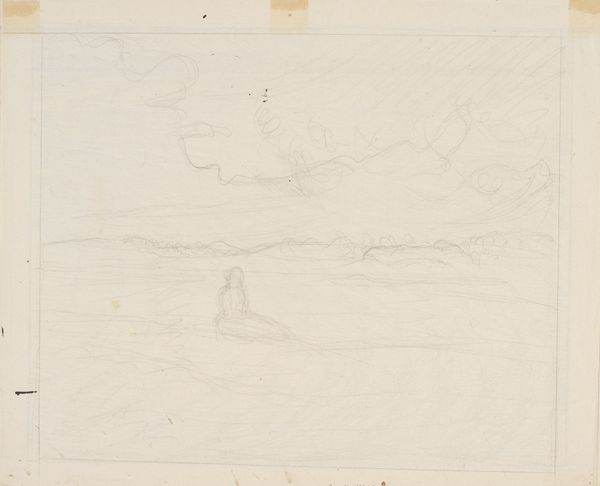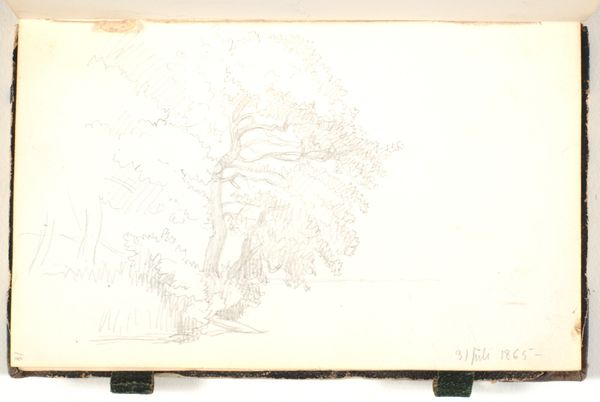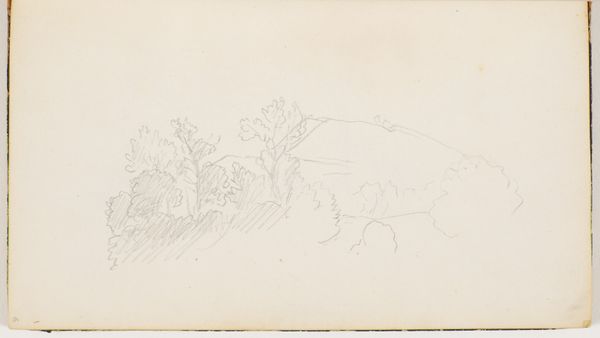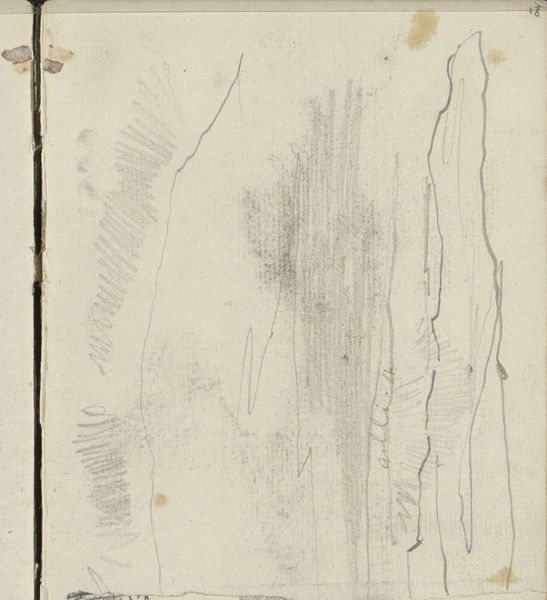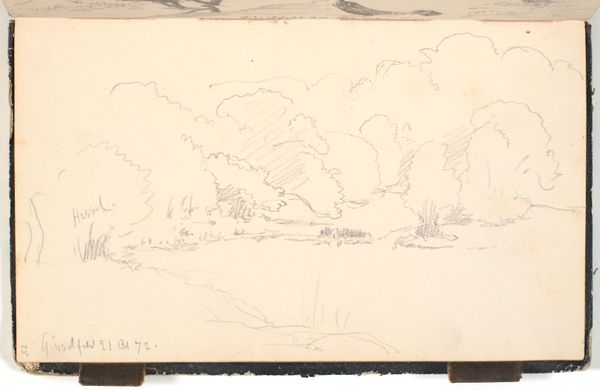
drawing, pencil
#
drawing
#
landscape
#
pencil
Dimensions: 215 mm (height) x 130 mm (width) (bladmaal)
Editor: Here we have P.C. Skovgaard’s 1872 pencil drawing, "Græs og blade," or "Grass and Leaves," housed at the SMK. It's such a delicate little sketch; the artist seems to capture a fleeting moment in nature. What do you see in this piece? Curator: I see a meditation on Danish identity. Skovgaard, a key figure in the Danish Golden Age, often turned to the landscape to define and celebrate the nation. Think of the period - 1872. Denmark had recently suffered territorial losses in the Second Schleswig War. Landscape art became a form of cultural reaffirmation, a way of saying "this is our land, this is who we are". Editor: So the choice of subject matter itself is a statement? Even in a seemingly simple sketch? Curator: Precisely. And consider where this would likely be displayed or viewed. While a quick field sketch, works like these would likely be bound in a sketchbook, to be presented in artists' studios, salons, spaces where national artistic identity was being shaped and contested. Note the inscription “16 Juli” in the corner: it documents the artist being ‘in the field’. The image operates not simply as art, but evidence of the artist's cultural fieldwork. How do you see the light? Editor: It's very faint. There's not a strong contrast, everything feels soft. Curator: Yes, that subdued lighting and limited tonal range can be seen as characteristic of a specifically Nordic light and atmosphere. Skovgaard isn't just drawing grass, he is drawing *Danish* grass. Editor: I never would have considered that. I was stuck on just seeing it as a study of nature. Curator: Exactly, and that highlights how our understanding of art changes as societal and political contexts evolve. Thanks for that observation! Editor: And I now know that even humble drawings can participate in constructing national identity.
Comments
No comments
Be the first to comment and join the conversation on the ultimate creative platform.
